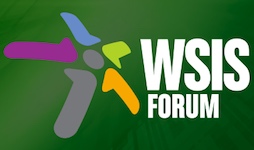From sustainable development goals SDGs, to unleashing 21st century global goals potentials, part 1
12 Jun 2017 13:15h - 14:00h
Event report
[Read more session reports from WSIS Forum 2017]
The session was moderated by Dr Robert Bishop (President & Founder ICES Foundation) who explained that the session will focus on the potentials of the Sustainable Development Goals (SDGs), especially the human and organisational ones. In this regard, he proposed realistic, tested, and validated, worldwide replicable scientific and technological solutions of the 21st century. He talked about the HDRR: Human Digital Rights and Responsibilities document that will be delivered to the International Telecommunication Union (ITU) with an explicit request to be handed over to the Commission on Science and Technology for Development (CSTD). Bishop noted that SDGs are dependent on one another and hence cannot be considered separately. However, to attain the SDGs, we need to replace the existing business model with greater social responsibily. This means that we need to change mindsets. We need a mobilising transformational leadership; the leadership that worked on the millennium development goals (MDGs) is no longer good. This means that we need to renew the governance model and be innovative.
Bishop gave the floor to Ms Anne Fistarol (HDRR: Human Digital Rights and Responsibility) to elaborate more on the Human Digital Rights and Responsibility document which touched upon the survival of the human species in the context of the digital age and robots. She noted that the document was developed in collaboration with civil society and scholars following a bottom-up and a top-down approach with a special focus on human themes and sustainability in the future. Fistarol posed some questions vis-à-vis artificial intelligence which present issues that are fascinating but also scary for human kind. For instance, what would a self-driving car do when it encounters an obstacle in its route? Who would decide what alternative route to take, the owner or the manufacturer of the car? These are issues that we should think about beforehand. We should combine all efforts to think together about sustainability in the future because we have to consider the complications of artificial intelligence before it is too late. On the same point, Bishop emphasised that we need to define the position of human beings in the digital world. Humans are being robotised and robots are being humanised.
Some examples of HDRR dimensions were presented by Mr Maxence Musset (co-founder of STALWART – a humanistic ecosystem based in Geneva). He expounded that we are experiencing the limit of the current economic model that drastically influences the wellbeing of individuals, their positive creative energy, and collective consciousness. STALWART is an ecosystem that provides an alternative answer to individual career transitions, company leaders, or investors. Everyone can enter into the STALWART ecosystem and create some added value for their own project and for all the projects currently running in the ecosystem and its dimensions. The STALWART ecosystem is based on agility, an organic management such as team management, self-organised management with customers’ oriented thinking, and three core values: cultivate happiness, experiment consciously, and interact authentically. Its mission is driven by sustainability in order to bring concrete contributions to the SDGs. The STALWART community is a talent-booster and the STALWART network is the business propagator, Musset concluded.
Another example was highlighted by Mr Patrick Genoud (Genève Lab) who introduced the Genève Lab as a way to tackle SDGs. Its mission is to accompany the public sector in its digital transition. Genève Lab helps prototype smart city solutions, mobilising as many local stakeholders as possible. These include the academia, SMEs, start-ups, and civil society. He added that we need big data and algorithms to help. We also need partnerships with machines, what is called a deep learning environment or artificial intelligence. This is the focus of Genève Lab which is concerned about the complex transformation of society and how to holistically integrate and break the knowledge silo. Genoud elaborated on one of the services that Genève Lab can offer: it can use algorithms to estimate the number of fatality and injured people from an earthquake. This is important because the loss of communication that follows any natural disaster could hamper the capacity of states to respond to calamities such as a tsunami. Hence, this could help governments enhance their responsiveness in the future.
by Noha Fathy
Related topics
Related event

